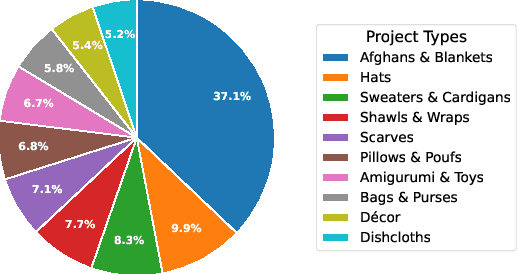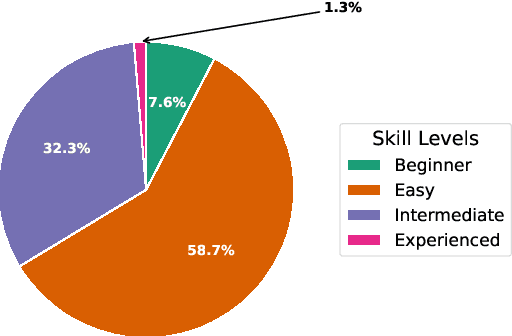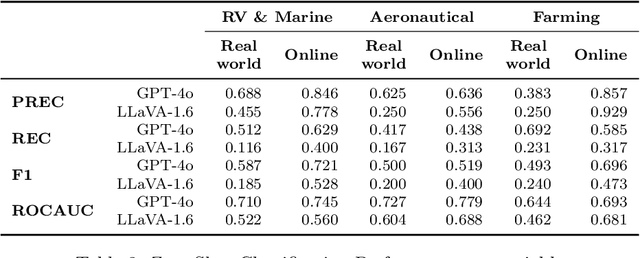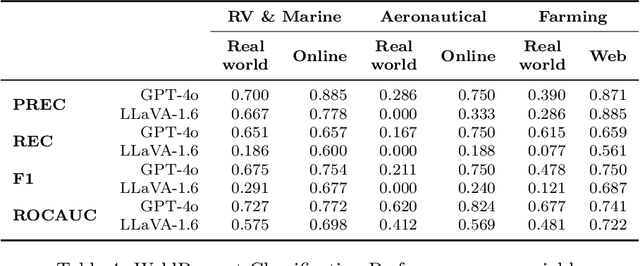Nitesh V. Chawla
From Verification Burden to Trusted Collaboration: Design Goals for LLM-Assisted Literature Reviews
Dec 12, 2025Abstract:Large Language Models (LLMs) are increasingly embedded in academic writing practices. Although numerous studies have explored how researchers employ these tools for scientific writing, their concrete implementation, limitations, and design challenges within the literature review process remain underexplored. In this paper, we report a user study with researchers across multiple disciplines to characterize current practices, benefits, and \textit{pain points} in using LLMs to investigate related work. We identified three recurring gaps: (i) lack of trust in outputs, (ii) persistent verification burden, and (iii) requiring multiple tools. This motivates our proposal of six design goals and a high-level framework that operationalizes them through improved related papers visualization, verification at every step, and human-feedback alignment with generation-guided explanations. Overall, by grounding our work in the practical, day-to-day needs of researchers, we designed a framework that addresses these limitations and models real-world LLM-assisted writing, advancing trust through verifiable actions and fostering practical collaboration between researchers and AI systems.
CrochetBench: Can Vision-Language Models Move from Describing to Doing in Crochet Domain?
Nov 12, 2025



Abstract:We present CrochetBench, a benchmark for evaluating the ability of multimodal large language models to perform fine-grained, low-level procedural reasoning in the domain of crochet. Unlike prior benchmarks that focus on high-level description or visual question answering, CrochetBench shifts the emphasis from describing to doing: models are required to recognize stitches, select structurally appropriate instructions, and generate compilable crochet procedures. We adopt the CrochetPARADE DSL as our intermediate representation, enabling structural validation and functional evaluation via execution. The benchmark covers tasks including stitch classification, instruction grounding, and both natural language and image-to-DSL translation. Across all tasks, performance sharply declines as the evaluation shifts from surface-level similarity to executable correctness, exposing limitations in long-range symbolic reasoning and 3D-aware procedural synthesis. CrochetBench offers a new lens for assessing procedural competence in multimodal models and highlights the gap between surface-level understanding and executable precision in real-world creative domains. Code is available at https://github.com/Peiyu-Georgia-Li/crochetBench.
SPECTRA: Spectral Target-Aware Graph Augmentation for Imbalanced Molecular Property Regression
Nov 06, 2025Abstract:In molecular property prediction, the most valuable compounds (e.g., high potency) often occupy sparse regions of the target space. Standard Graph Neural Networks (GNNs) commonly optimize for the average error, underperforming on these uncommon but critical cases, with existing oversampling methods often distorting molecular topology. In this paper, we introduce SPECTRA, a Spectral Target-Aware graph augmentation framework that generates realistic molecular graphs in the spectral domain. SPECTRA (i) reconstructs multi-attribute molecular graphs from SMILES; (ii) aligns molecule pairs via (Fused) Gromov-Wasserstein couplings to obtain node correspondences; (iii) interpolates Laplacian eigenvalues, eigenvectors and node features in a stable share-basis; and (iv) reconstructs edges to synthesize physically plausible intermediates with interpolated targets. A rarity-aware budgeting scheme, derived from a kernel density estimation of labels, concentrates augmentation where data are scarce. Coupled with a spectral GNN using edge-aware Chebyshev convolutions, SPECTRA densifies underrepresented regions without degrading global accuracy. On benchmarks, SPECTRA consistently improves error in relevant target ranges while maintaining competitive overall MAE, and yields interpretable synthetic molecules whose structure reflects the underlying spectral geometry. Our results demonstrate that spectral, geometry-aware augmentation is an effective and efficient strategy for imbalanced molecular property regression.
The Reasoning Boundary Paradox: How Reinforcement Learning Constrains Language Models
Oct 02, 2025Abstract:Reinforcement Learning with Verifiable Rewards (RLVR) has emerged as a key method for improving Large Language Models' reasoning capabilities, yet recent evidence suggests it may paradoxically shrink the reasoning boundary rather than expand it. This paper investigates the shrinkage issue of RLVR by analyzing its learning dynamics and reveals two critical phenomena that explain this failure. First, we expose negative interference in RLVR, where learning to solve certain training problems actively reduces the likelihood of correct solutions for others, leading to the decline of Pass@$k$ performance, or the probability of generating a correct solution within $k$ attempts. Second, we uncover the winner-take-all phenomenon: RLVR disproportionately reinforces problems with high likelihood, correct solutions, under the base model, while suppressing other initially low-likelihood ones. Through extensive theoretical and empirical analysis on multiple mathematical reasoning benchmarks, we show that this effect arises from the inherent on-policy sampling in standard RL objectives, causing the model to converge toward narrow solution strategies. Based on these insights, we propose a simple yet effective data curation algorithm that focuses RLVR learning on low-likelihood problems, achieving notable improvement in Pass@$k$ performance. Our code is available at https://github.com/mail-research/SELF-llm-interference.
Breaking Language Barriers: Equitable Performance in Multilingual Language Models
Aug 18, 2025Abstract:Cutting-edge LLMs have emerged as powerful tools for multilingual communication and understanding. However, LLMs perform worse in Common Sense Reasoning (CSR) tasks when prompted in low-resource languages (LRLs) like Hindi or Swahili compared to high-resource languages (HRLs) like English. Equalizing this inconsistent access to quality LLM outputs is crucial to ensure fairness for speakers of LRLs and across diverse linguistic communities. In this paper, we propose an approach to bridge this gap in LLM performance. Our approach involves fine-tuning an LLM on synthetic code-switched text generated using controlled language-mixing methods. We empirically demonstrate that fine-tuning LLMs on synthetic code-switched datasets leads to substantial improvements in LRL model performance while preserving or enhancing performance in HRLs. Additionally, we present a new dataset of synthetic code-switched text derived from the CommonSenseQA dataset, featuring three distinct language ratio configurations.
Spectral Manifold Harmonization for Graph Imbalanced Regression
Jul 01, 2025Abstract:Graph-structured data is ubiquitous in scientific domains, where models often face imbalanced learning settings. In imbalanced regression, domain preferences focus on specific target value ranges representing the most scientifically valuable cases; we observe a significant lack of research. In this paper, we present Spectral Manifold Harmonization (SMH), a novel approach for addressing this imbalanced regression challenge on graph-structured data by generating synthetic graph samples that preserve topological properties while focusing on often underrepresented target distribution regions. Conventional methods fail in this context because they either ignore graph topology in case generation or do not target specific domain ranges, resulting in models biased toward average target values. Experimental results demonstrate the potential of SMH on chemistry and drug discovery benchmark datasets, showing consistent improvements in predictive performance for target domain ranges.
SMOTExT: SMOTE meets Large Language Models
May 19, 2025Abstract:Data scarcity and class imbalance are persistent challenges in training robust NLP models, especially in specialized domains or low-resource settings. We propose a novel technique, SMOTExT, that adapts the idea of Synthetic Minority Over-sampling (SMOTE) to textual data. Our method generates new synthetic examples by interpolating between BERT-based embeddings of two existing examples and then decoding the resulting latent point into text with xRAG architecture. By leveraging xRAG's cross-modal retrieval-generation framework, we can effectively turn interpolated vectors into coherent text. While this is preliminary work supported by qualitative outputs only, the method shows strong potential for knowledge distillation and data augmentation in few-shot settings. Notably, our approach also shows promise for privacy-preserving machine learning: in early experiments, training models solely on generated data achieved comparable performance to models trained on the original dataset. This suggests a viable path toward safe and effective learning under data protection constraints.
Intersectional Divergence: Measuring Fairness in Regression
May 01, 2025Abstract:Research on fairness in machine learning has been mainly framed in the context of classification tasks, leaving critical gaps in regression. In this paper, we propose a seminal approach to measure intersectional fairness in regression tasks, going beyond the focus on single protected attributes from existing work to consider combinations of all protected attributes. Furthermore, we contend that it is insufficient to measure the average error of groups without regard for imbalanced domain preferences. To this end, we propose Intersectional Divergence (ID) as the first fairness measure for regression tasks that 1) describes fair model behavior across multiple protected attributes and 2) differentiates the impact of predictions in target ranges most relevant to users. We extend our proposal demonstrating how ID can be adapted into a loss function, IDLoss, and used in optimization problems. Through an extensive experimental evaluation, we demonstrate how ID allows unique insights into model behavior and fairness, and how incorporating IDLoss into optimization can considerably improve single-attribute and intersectional model fairness while maintaining a competitive balance in predictive performance.
Do Multimodal Large Language Models Understand Welding?
Mar 18, 2025



Abstract:This paper examines the performance of Multimodal LLMs (MLLMs) in skilled production work, with a focus on welding. Using a novel data set of real-world and online weld images, annotated by a domain expert, we evaluate the performance of two state-of-the-art MLLMs in assessing weld acceptability across three contexts: RV \& Marine, Aeronautical, and Farming. While both models perform better on online images, likely due to prior exposure or memorization, they also perform relatively well on unseen, real-world weld images. Additionally, we introduce WeldPrompt, a prompting strategy that combines Chain-of-Thought generation with in-context learning to mitigate hallucinations and improve reasoning. WeldPrompt improves model recall in certain contexts but exhibits inconsistent performance across others. These results underscore the limitations and potentials of MLLMs in high-stakes technical domains and highlight the importance of fine-tuning, domain-specific data, and more sophisticated prompting strategies to improve model reliability. The study opens avenues for further research into multimodal learning in industry applications.
Utilizing Large Language Models in An Iterative Paradigm with Domain Feedback for Molecule Optimization
Oct 17, 2024Abstract:Molecule optimization is a critical task in drug discovery to optimize desired properties of a given molecule through chemical modification. Despite Large Language Models (LLMs) holding the potential to efficiently simulate this task by using natural language to direct the optimization, straightforwardly utilizing shows limited performance. In this work, we facilitate utilizing LLMs in an iterative paradigm by proposing a simple yet highly effective domain feedback provider, namely $\text{Re}^2$DF. In detail, $\text{Re}^2$DF harnesses an external toolkit, RDKit, to handle the molecule hallucination, if the modified molecule is chemically invalid. Otherwise, its desired properties are computed and compared to the original one, establishing reliable domain feedback with correct direction and distance towards the objective, followed by a retrieved example, to explicitly guide the LLM to refine the modified molecule. We conduct experiments across both single- and multi-property objectives with 2 thresholds, where $\text{Re}^2$DF shows significant improvements. Particularly, for 20 single-property objectives, $\text{Re}^2$DF enhances the Hit ratio by 16.95\% and 20.76\% under loose and strict thresholds, respectively. For 32 multi-property objectives, $\text{Re}^2$DF enhances the Hit ratio by 6.04\% and 5.25\%.
 Add to Chrome
Add to Chrome Add to Firefox
Add to Firefox Add to Edge
Add to Edge